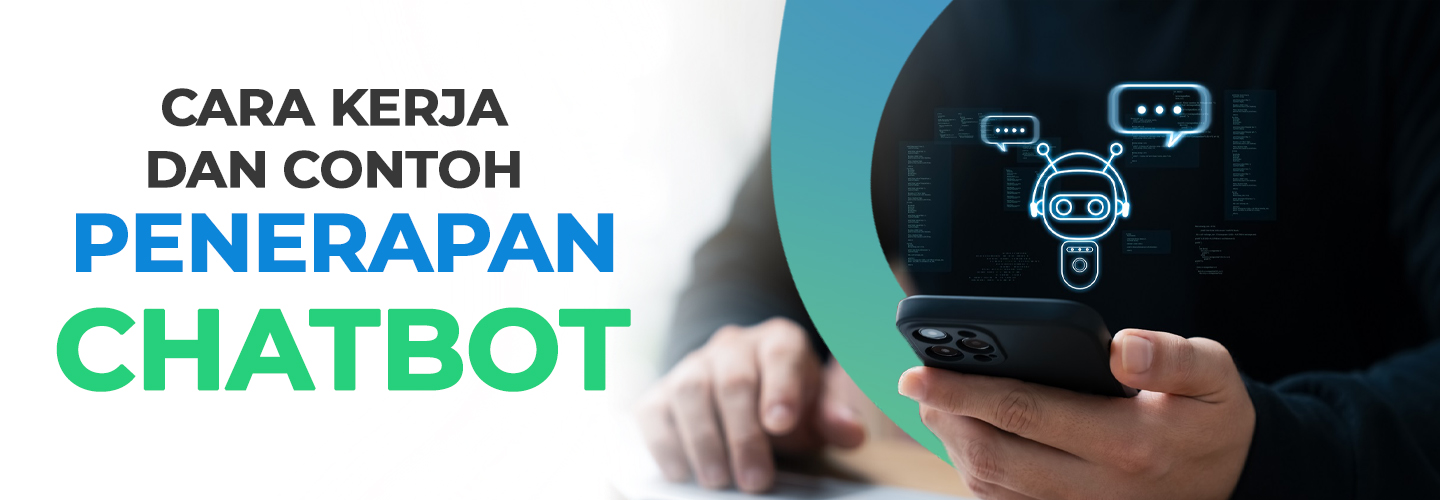Definition of Chatbot, How it Works, and Its Benefits for Business

Chatbots are a technological innovation that has changed the way we interact with digital services. This intelligent computer program is designed to carry out conversations with humans via text or voice, providing automatic responses that mimic human interactions.
By utilizing artificial intelligence, chatbots are able to understand user input and provide appropriate answers. As a result, chatbots can be said to be very useful tools in various fields, from customer service to e-commerce.
If you want to know more about chatbots, here is a complete explanation of chatbots!
Chatbot Definition
A chatbot is a computer program designed to carry out conversations with humans, either through text or voice. The ultimate goal is to provide automated responses that mimic human interactions.
Chatbots are often used to provide information or handle user requests. Uses artificial intelligence technology to understand what you say or type, then provides appropriate answers.
Chatbots can be used in various places, such as in banking applications, online stores, or company websites.
With chatbots, companies can speed up customer service and provide information to users without having to wait for a response from humans.
Benefits of Using Chatbots for Business
Chatbots provide many benefits for businesses, such as improving customer service, sales, and brand loyalty.
Apart from that, chatbots also help in saving costs and increasing operational efficiency.
Here are some of the benefits of chatbots for business:
1. Provide 24/7 service
One of the main advantages of chatbots is their ability to provide non-stop customer service.
This means customers can ask questions or get help at any time, without having to wait for office hours.
This not only increases customer satisfaction but also expands business reach in global markets with different time zones.
2. Answer Customer Questions Automatically
Because it can answer common questions automatically, chatbots can reduce customer service workload.
For example, chatbots can provide information about products, ordering processes, or shipping policies.
3. Saves Team Time
By answering routine questions such as FAQs, chatbots are a great choice for saving time and operational costs.
Thus, customer service can be allocated to handle more complex and strategic interactions.
4. Increase Sales Through DM (Direct Messages)
Chatbots can help sell products directly through social media platforms, such as Instagram and Facebook Messenger.
This not only expands sales reach, but also provides an integrated shopping experience across various channels.
5. Streamline the Customer Journey
Chatbots can help reduce friction in the purchasing process by providing 24/7 service, product recommendations, relevant promotions, and guidance for completing transactions.
Thus, it can improve the overall user experience.
6. Reduce Abandoned Shopping Carts
A common problem in e-commerce is abandoned shopping carts.
However, the use of chatbots can help mitigate this by providing users with important information before they reach the checkout stage.
7. Reduces Stress for Employees and Customers
The use of chatbots helps reduce stress for both employees and customers.
For employees, the high workload of handling many of the same conversations and questions every day can lead to burnout, dissatisfaction, and an imbalance between work and personal life.
Chatbots can help automate many of these tasks, so employees can focus on more important and meaningful conversations.
Meanwhile, for customers, chatbots provide a faster and more responsive service experience.
This way, customers don't have to wait long to get answers or help, thereby reducing their frustration when interacting with customer service.
8. Assist Customers in Making Appointments
The next benefit of chatbots is that they can help handle appointment requests easily.
With this feature, users can shop online, then make an appointment online via computer or cellphone.
9. Provide Customer Service in Various Languages
Chatbots can provide support in various languages so they can help businesses grow globally.
An example is the Merci Handy chatbot which can provide services in English and French.
10. Reduce Customer Service Team Costs
Chatbot implementation can reduce operational costs for the customer service team. The reason is, by using chatbots, companies don't need to employ many staff to provide 24/7 service.
Because chatbots can work around the clock with a monthly subscription fee that is much more affordable than hiring staff.
How Chatbots Work
Chatbots work based on three main components, namely Natural Language Processing (NLP), Machine Learning (ML) algorithms, and Rule-based systems.
1. Rule-based systems
In rule-based systems, chatbots follow "if-then" rules that are pre-programmed by developers.
These chatbots provide predetermined responses based on user input. However, the responses are limited and may not be effective for complex questions.
2. Natural Language Processing (NLP)
This technology allows chatbots to understand and analyze human language, both in written and spoken form.
NLP algorithms break down user messages into meaningful patterns, recognize intent, and extract relevant information.
By understanding the context and intent of a user's question, chatbots can provide more accurate and natural responses.
3. Machine Learning (ML)
This technology allows chatbots to learn from various datasets and user interactions, improving their responses over time.
ML-based chatbots become more intelligent and adaptive with continued use, improving their ability to interact with users effectively.
Examples of Chatbot Use
Here are some examples of chatbot use that you may be familiar with and often use:
- Siri by Apple: Siri is a virtual assistant developed by Apple. Siri can be used on Apple devices such as iPhones and iPads to help users with various tasks, such as sending messages, setting reminders, and answering questions.
- Duolingo: Duolingo is a language learning app that uses chatbots to help users learn languages in an interactive and fun way. The chatbot in Duolingo acts as a tutor who provides practice and feedback to users.
- World Health Organization (WHO): At the beginning of the Covid-19 pandemic, WHO launched a chatbot service via WhatsApp. This chatbot provides important information about Covid-19 to the world community, helping to disseminate accurate and up-to-date information about the pandemic.
By looking at the explanation above, now of course you understand that chatbots have great potential to continue to improve business efficiency and user experience in the future.
With its ability to provide 24/7 service, answer questions automatically, and even assist in the sales process, chatbots can be said to be a valuable asset for many companies.
If you are currently running a business, you should immediately integrate chatbots into company operations.
Integrating chatbots into company operations not only provides a competitive advantage but also helps face increasingly complex market demands.
Want to understand more about digital marketing strategies to grow your business online?
Join prasmul-eli's Digital Marketing Fundamentals program and learn important concepts such as the customer journey, social media strategy, and digital advertising techniques.
